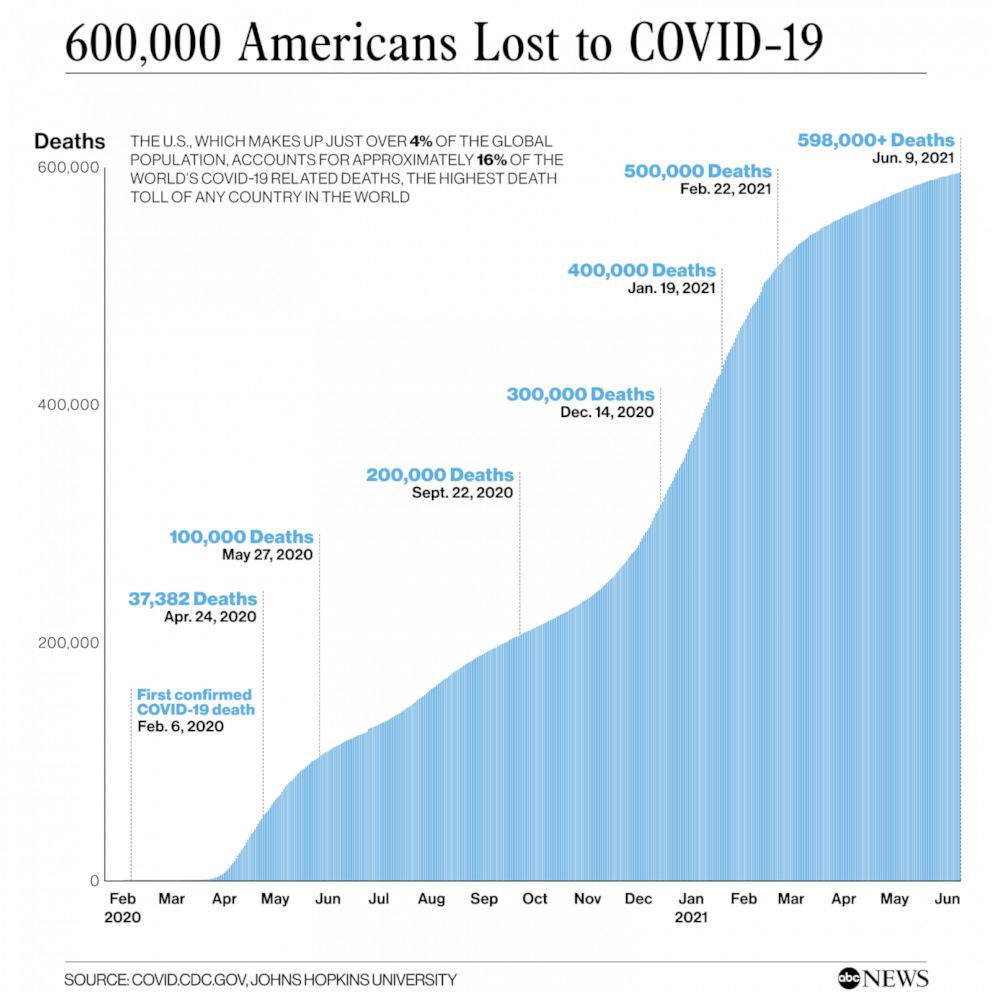My M.D. friend’s anger spilled over as we drove back home from Chicago. Her bout of COVID left her with longer-term struggles, months of off tastes, strange and missing smells, less air and energy, and other spooky challenges. She joins many of the vaccinated in thinking that the unvaccinated are hurting us all. She’ll extend a little sympathy to young men who might weigh a possible link between rare cases of heart inflammation after vaccination against the effects of COVID-19 itself. It’s a tough choice when you feel young and healthy, given that the young often have a false sense of invulnerability. With the possible exception of young men, though, she believes anyone who has examined the evidence should have gotten that shot yesterday.
It’s October of 2021. The parade should be over. The shots should mostly all be done. My take after evaluating the evidence is that the shot is vastly less dangerous than COVID itself, so much so that I don’t even regard vaccination as a choice.
That said, though, the current Facebook scandal has me planning to take the blog sideways today, away from testing, curriculum and teaching itself. How did Facebook enter this vaccine post? Vaccination has become a social media and internet search issue at its core. Too often we don’t listen to the vaccine hesitant carefully enough. Instead, we share facts that they “know” are not true. How do they know? Friends on Facebook told them. Or an internet search took them to places that many vaccine proponents don’t even know exist.
We know about Tucker Carlson. Like the round-faced chipmunk(s) who keep uprooting the mums and pansies in my porch flowerbox, the fact of his existence is hard to deny. He’s out there and he is saying whatever will pull in ratings. If he thought it would boost his numbers enough, I’m sure he’d cover the Martian takeover of the U.S. government in 1964. Carlson himself refuses to tell people whether or not he is vaccinated.

That’s our problem at the moment. And we don’t always help ourselves when we confidently lecture to the worried well who are afraid of that needle. It’s too easy to sound as if we are talking down to anti-vaxxers or the vaccine hesitant* when we offer glib statements that don’t match the Facebook exchanges or internet searches of our listeners. Statements like “Almost nobody ever has a serious reaction” is an example.
The fact that a next door neighbor had a fever and aches for a day or two may seem serious to someone who has never experienced a monster illness. Maybe a cousin has complained of pain in a vaccination site and told the story over and over again of how she couldn’t “lift her arm for a week.” And whether we like it or not, people have definitely died from vaccinations. Millions of people have had their vaccinations now, and trying to nail down that incredibly tiny percentage of persons who passed away shortly after being vaccinated reveals the outline of our credibility problem.
A search on “how many people have died from covid vaccinations” reveals a terrifying schism in the available information out there. A hard number doesn’t truly exist, because people who die after vaccinations may die from a wide variety of causes. Sudden death events were common before COVID and will continue to be common in our lifetimes.
Tucker Carlson used his show in May to suggest that 3,362 people had died from the vaccine by that time, using numbers from the federal Vaccine Adverse Event Reporting System database, or VAERS. The VAERS system is open to anyone who perceives they had a reaction to the vaccine, and inputs are not verified. I could go in now and report my tongue had turned mysteriously green, although the site does warn users that federal consequences are possible if the site is misused. It also wants to know where a user sought medical help.
Data also slips away all the time in any voluntary reporting system. I had a slight fever after my booster shot. I won’t get around to reporting that. They don’t need my tiny blip of data to know the vaccine can cause a fever of 100.6 for part of one day. That report would take a chunk of my valuable time with no benefit to me. A more excitable person might have sought help and made a report. I made tea and went to bed with a good book. VAERS — as the site itself emphasizes — is not a reliable source of information. And as far as deaths go, if Joe has a heart attack the night he got his vaccination, is the vaccination the cause? What if Joe slips and falls in the bathtub? What if the vaccine itself is fine for almost everyone but Joe is allergic to the polyethylene glycol in his shot? VAERS data provides information, but not causation.
Tucker said 3,362, a number he knew to be fuzzy and essentially fictional. He knows no verifiable number exists. Other sources give much bigger numbers. Other sites claim almost 45,000 people who got the COVID-19 vaccinations died in 72 hours. Many of these links lead to “page not found.” But somebody found those pages once. Sifting through the amount of (dis)information on this topic is not merely difficult. I think it’s undoable.
Eduhonesty: Yes, reader, I am guessing you believe in getting vaccinated. I believe that injection is clearly the lesser of my evils too. But I would like to ask readers to be polite to the vaccine hesitant. Listen to them.
We need to persuade the hesitant to get on the bandwagon, because herd immunity is a real thing, and if we ever get there, we won’t have to worry so much. Teachers will be able to decide whether to retire, resign or plan for their next year without factoring in likely COVID-19 exposures. Administrators will have more confidence that staff members they hired will not vanish mid-year. Parents will be able to stop wavering on possible home schooling. When dad has back pain and has to go the emergency room, with luck, he will only have to wait two hours instead of twelve. We will all be able to stop buying masks regularly.
Please, reader, prepare the relevant facts for your arguments, starting with the fact that 700,000 people in this country have died from the actual COVID-19 disease. Pictures help to make this trend clear at a glance. And herd immunity is our only chance of getting back to “normal.”

A natural question should arise here: In this scenario, why are people hesitant to go online to sign up for a shot at their local pharmacy? It’s so easy to do. Much of the world envies us our ready access to help right now.
We are dealing with something larger than fear a needles (most of the time anyway) when we talk to the vaccine hesitant. That vaccine hesitancy springs from a number of sources — one of which is lack of faith in our leaders. To persuade the hesitant, we must be ready to confront the “mask” argument because that argument has its roots in facts that deserve attention and recognition: At one point, early in the pandemic, our leaders did lie to us. (In my opinion, they did anyway.) When the CDC went on television and told people masks were not helpful because we might be more inclined to touch our faces when wearing them, I believe they knew they were sharing a falsehood. I also understand they were backed into a corner and probably thought they had no choice.

The toilet paper had flown off the shelves and cleaning product aisles were empty.
Those leaders knew the truth: If they told people to buy masks, healthcare providers would almost immediately end up without essential personal protective equipment. Even without a government mask endorsement, in many areas, the mask supply dried up within weeks. People were donating the masks they used when cleaning their cat boxes to friends who were nurses. Our utter lack of pandemic preparedness backed leaders into a corner and I forgive them.
But as we deal with the vaccine hesitant, I’d say we must remember that lie. It’s part of the current mistrust. Changes in policy that came as data was analyzed are also part of the hesitancy. Recommendations changed. Maybe they changed because scientists realized that almost all the transmission was airborne and a bleach bath after work was unnecessary. But recommendations changed, which confused people. They continue to change, too. The mask issue remains in play.
We have to listen if we are going to sway the hesitant. We have to be able to answer their concerns. My feed is not your feed is not Mark or Esme’s feed. This is a time for persuasion. Persuasion requires that we acknowledge the facts and factoids being fed into Esme’s phone and start from there.
I hear too much bashing of the unvaccinated. No one can be expected to respond positively when under verbal assault. No one listens when an argument turns ugly. “Factoids” or so-called facts are convincing people to sit on the fence. True facts have the potential to get them off the fence.
But first we have to listen, so we can figure out what we ought to say.
* The vaccine hesitant and anti-vaxxers often differ radically in their positions and views. I honestly don’t think there’s anything I can say that will persuade the 5-G crowd who fear being magnetized and tracked. They are Tucker’s audience for the Martian takeover story. But the hesitant often have worries that can be addressed with solid information and numerical comparisons, if we just take long enough to identify the exact nature of their concerns.
